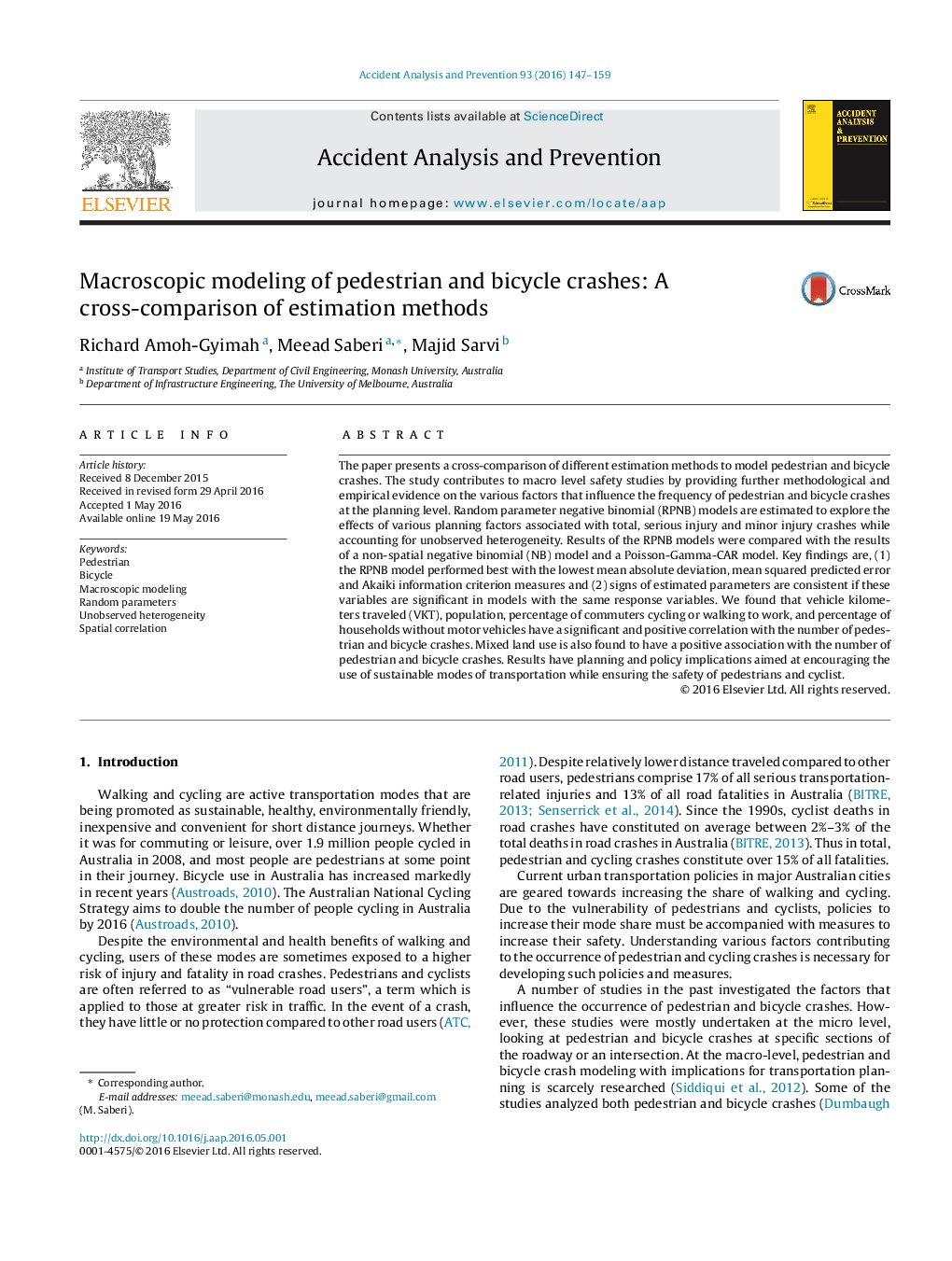| Article ID | Journal | Published Year | Pages | File Type |
|---|---|---|---|---|
| 571954 | Accident Analysis & Prevention | 2016 | 13 Pages |
•Cross-comparison of estimation methods: non-spatial negative binomial, random parameter negative binomial, and Poisson-Gamma-CAR.•Inclusion of a comprehensive set of exposure and risk proxies for pedestrians and bicycles.•The random parameter negative binomial model performed better than other selected methods.•Percentage of commuters cycling or walking to work, percentage of households without motor vehicles, and mixed land use have a significant and positive correlation with the number of crashes.
The paper presents a cross-comparison of different estimation methods to model pedestrian and bicycle crashes. The study contributes to macro level safety studies by providing further methodological and empirical evidence on the various factors that influence the frequency of pedestrian and bicycle crashes at the planning level. Random parameter negative binomial (RPNB) models are estimated to explore the effects of various planning factors associated with total, serious injury and minor injury crashes while accounting for unobserved heterogeneity. Results of the RPNB models were compared with the results of a non-spatial negative binomial (NB) model and a Poisson-Gamma-CAR model. Key findings are, (1) the RPNB model performed best with the lowest mean absolute deviation, mean squared predicted error and Akaiki information criterion measures and (2) signs of estimated parameters are consistent if these variables are significant in models with the same response variables. We found that vehicle kilometers traveled (VKT), population, percentage of commuters cycling or walking to work, and percentage of households without motor vehicles have a significant and positive correlation with the number of pedestrian and bicycle crashes. Mixed land use is also found to have a positive association with the number of pedestrian and bicycle crashes. Results have planning and policy implications aimed at encouraging the use of sustainable modes of transportation while ensuring the safety of pedestrians and cyclist.
